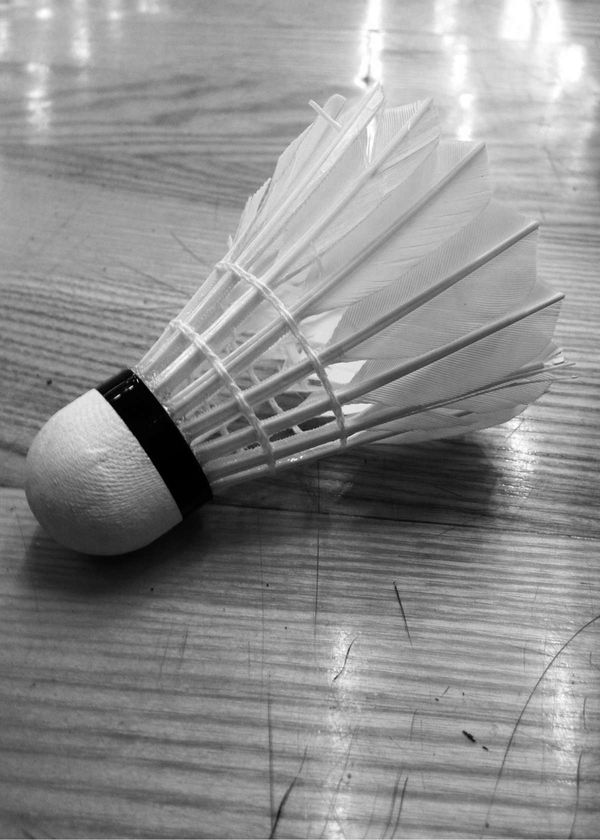Lacrosse is one of the oldest North American indigenous sports. It has evolved from its traditional roots to become a modern-day sport with widespread appeal.
But when exactly was lacrosse invented? In order to answer this question, we must take a look at the history of this game.
Keep reading to learn more about the fascinating history of lacrosse and how it developed into the game we know today.
Table of Contents
- Introduction
- The Origins of Lacrosse
- Cultural Significance of Lacrosse
- Evolution of Lacrosse
- Lacrosse in the United States
- Women in Lacrosse
- Conclusion
Introduction
Brief Overview of Lacrosse as a Sport
Lacrosse is a fast-paced, dynamic sport that combines elements of basketball, soccer, and hockey. Players use a small rubber ball and a long-handled stick called a crosse or lacrosse stick.
The objective is simple: shoot the ball into the opponent's goal while preventing them from doing the same. The sport can be played outdoors or indoors on a variety of surfaces, including grass, turf, and hardwood.
The game is currently divided into two main categories: men's and women's lacrosse. Men's lacrosse is the most popular version of the sport, while women's lacrosse has seen significant growth in the last several years.
Regardless of gender, players of all ages and backgrounds can enjoy the exciting action and camaraderie that lacrosse provides.
The Origins of Lacrosse
Who Invented Lacrosse?
Lacrosse was invented by the indigenous peoples of North America. It's considered one of the oldest team sports in the world, with roots dating back to as early as the 12th century. The game was originally played by Eastern Woodlands Native Americans and by some Plains Indian tribes in what is now Canada.
The Mohawk and Iroquois tribes, in particular, were known for their passionate dedication to the game. It was initially played as a ritualistic sport, with religious and spiritual significance. The players would practice for days or weeks ahead of the game, sometimes fasting in preparation.
The popularity of the game soon spread to other tribes throughout North America, including those in the present-day United States. The Huron, Algonquin, and Iroquois continued to play the game with a variety of rules and regulations.
When Was it First Played?
The exact date when lacrosse was first played is unknown, as it predates recorded history. However, it's believed to have been developed as early as the 12th century.
The sport was traditionally played in the spring to commemorate the coming of the new season and was seen as a tribute to the Creator.
The French and English settlers who arrived in North America in the 17th century documented their encounters with Native Americans playing lacrosse.
By the late 1800s, the game had become popular across Canada, and clubs began to be formed. In 1867, the National Lacrosse Association was established in Canada.
Where Was it First Played?
The game was first played in the region now known as the northeastern United States and eastern Canada. Different tribes had their own versions of the game, with varying rules and numbers of players, but the fundamental essence of the game — using a stick to throw, catch, and carry a ball — remained consistent.
Lacrosse was also played in other parts of the world, including some Caribbean islands and parts of Central and South America. The game had a lasting impact on these regions, with many local tribes adopting it as part of their cultural heritage.
However, lacrosse in Canada and the United States is considered to be the most authentic form of the game. It has been continually refined over time and remains popular among both players and spectators alike.
Cultural Significance of Lacrosse
Original Purpose of the Game in Native American Cultures
In Native American cultures, lacrosse was more than just a game. It served several purposes that transcended the physical demands of the sport.
Often referred to as "The Creator's Game," it was played for spiritual and healing purposes and to resolve conflicts. The game was seen as a gift from the Creator and was used to show gratitude for life's blessings.
The game was also used to strengthen tribal unity by bringing together people of different backgrounds. Tribes viewed the sport as an important part of their cultural identity and would come together to celebrate it with feasts and festivities.
How Lacrosse Was Named
The name 'lacrosse' comes from the French term "la crosse," meaning "the stick." This term was coined by French Jesuit missionary Jean de Brébeuf who observed the game during his travels in Huron country in 1637. The indigenous people had their own names for the game including Baggataway or Tewaarathon, depending on the tribe.
Interestingly, the sport has been known by a variety of different names in different regions and cultures. In Europe, it was called "la crosse" while other parts of the world referred to it as "box-ball," "baggataway," or "field hockey."
No matter what it's called, one thing remains clear — Lacrosse is an ancient and enduring sport that has been part of the human experience for centuries. It serves as a powerful symbol of resilience and a reminder of how cultures can remain strong in the face of adversity.

Evolution of Lacrosse
Changes in Lacrosse Rules Over Time
Over the centuries, the rules of lacrosse have evolved considerably. While traditional games could involve hundreds of players and last for days, modern lacrosse involves two teams of ten players each (in field lacrosse) or six players each (in box lacrosse), and games are divided into four quarters of 15 minutes each.
The adoption of standardized rules occurred in the mid-19th century when European settlers started playing the game.
The evolution of lacrosse has been influenced by many factors, including advances in technology. New equipment such as protective gear and specialized sticks have allowed players to push the boundaries of the game and create a faster-paced, more dynamic style of play.
Evolution of Lacrosse Equipment
Lacrosse equipment has evolved over time as well. Traditional sticks made from wood and animal hide have given way to modern sticks made of plastic and metal. The ball, originally made of deerskin filled with grass, is now made of solid rubber.
Protective gear, such as helmets, gloves, and pads, became a standard requirement in the 20th century.
The game has also seen the introduction of specialized apparel such as jerseys, shorts, and shoes designed specifically for lacrosse. Such advancements have enabled players to play the game with greater speed and agility while reducing their risk of injury.
Spread of Lacrosse to Other Countries
From its origins in North America, lacrosse has spread to other parts of the world. British soldiers took the game home after their stay in Canada in the 19th century, and from there, it spread to Australia, New Zealand, and other parts of Europe.
Today, lacrosse is played at both amateur and professional levels in many countries across the globe.
The introduction of international tournaments has also helped popularize the game. The Federation of International Lacrosse (FIL) was founded in 2008 and now organizes world championships every four years. In 2021, Japan hosted the FIL World Indoor Lacrosse Championships — a historic event that marked the growing global popularity of lacrosse.
Lacrosse in the United States
How and When It Became Popular in the US
While lacrosse was played by Native Americans long before European exploration, its popularity among the general public in the United States started to grow significantly in the 20th century, particularly in the Northeast.
The sport's fast-paced nature, combined with its blend of skill, strategy, and physicality, appealed to a broad range of athletes and spectators. As more schools and universities began offering lacrosse programs, participation rates surged.
Today, lacrosse is one of the fastest-growing sports in North America, with nearly three million people picking up a stick in recent years.
Establishment of Professional Lacrosse
The first professional lacrosse league in the United States was the American Lacrosse League, which was short-lived and only operated in 1988. However, professional lacrosse truly began to flourish with the establishment of Major League Lacrosse (MLL) in 1999 and the National Lacrosse League (NLL) gaining prominence.
These leagues have provided a platform for the best players in the world to showcase their skills and have contributed significantly to the sport's growing popularity.
The NLL is the oldest professional lacrosse league in North America and has grown to include teams in Canada, the United States, and England.
The MLL, on the other hand, features teams from all over the United States and has been credited with furthering the sport's acceptance among mainstream sports fans.

Women in Lacrosse
When Was the First Women's Lacrosse Game Played?
Women's lacrosse has a rich history that dates back to the early 20th century. The first women's lacrosse game was held in Scotland in 1890 at the St Leonards School.
The sport was introduced by Louisa Lumsden, who had seen it played by men while visiting Canada. This marked the beginning of women's involvement in the sport, which has grown exponentially over the years.
The first women's lacrosse team in the United States was formed at Bryn Mawr College in 1926. The college went on to develop its own set of rules, which became the foundation for modern women's lacrosse.
How Has Women's Lacrosse Evolved Over the Years?
Women's lacrosse has come a long way since its early days. It has grown into a highly competitive sport with national and international championships and an ever-growing fanbase.
The rules of the game have also been adapted to make it safer for female players, while new equipment such as specialized sticks and protective gear has allowed the game to be played in a faster-paced style that is more conducive to today's athletes.
With the growing popularity of lacrosse among women, more and more opportunities are being created for female players at all levels of competition. The rise of women’s professional leagues such as the United Women’s Lacrosse League (UWLX) is a testament to this growth.
With increasing media coverage, investments in youth programs, and more female role models in the sport, there is no doubt that lacrosse will continue to thrive well into the future.
Role of Women in the Sport's Development
Women have played a crucial role in the evolution and growth of lacrosse. They have not only participated as players but also as coaches, officials, and administrators. Women's lacrosse, though similar in objective, differs from the men's game in terms of equipment and rules, emphasizing speed and skill over physical contact.
The development of women's lacrosse has been marked by the formation of various organizations dedicated to promoting the sport among women, including the US Women's Lacrosse Association in 1931 and the International Federation of Women's Lacrosse Associations in 1972.
These organizations have been instrumental in advancing and protecting the rights of female lacrosse players. Their efforts have seen the introduction and adoption of specific rules, such as allowing for self-officiation, which has empowered women to become leaders on and off the field.
Women's involvement in the sport has also helped dispel negative misconceptions about lacrosse being too dangerous for female players. Through their participation, women have proven that lacrosse is a safe and accessible sport for all genders.
This has been crucial in furthering the growth of the game and creating an inviting atmosphere for both male and female participants.
Conclusion
Recap of the Main Points
Lacrosse, a game of speed, skill, and strategy, has a rich history that's deeply intertwined with Native American cultures. Originally a spiritual activity and a means to resolve conflicts, it has evolved over time to become one of the fastest-growing sports in the world.
The rules have been standardized, equipment modernized, and its reach has extended beyond North America to other parts of the globe. The sport has also seen significant participation from women, further adding to its diversity and inclusivity.
Women's involvement has been instrumental in propelling the sport forward and helping it gain acceptance within mainstream sports. Through organizations, rules, and role models, women have provided leadership that has enabled lacrosse to reach its current level of success.
As the game continues to evolve and grow, female players will no doubt keep playing an important part in shaping its future.
The Current State of Lacrosse and Its Future
Today, lacrosse continues to enjoy growing popularity, particularly in the United States, where it has established both amateur and professional platforms. Women's lacrosse is on the rise, drawing more participants and audiences each year.
As with many sports, lacrosse is continuously evolving, with new rules and technologies being introduced to improve the game.
The future of lacrosse looks promising. With increasing media coverage, rising participation rates, and continuous efforts to promote the sport at grassroots levels, lacrosse is poised for even greater growth in the coming years.
Its rich cultural significance, coupled with its dynamic nature, ensures that the sport will continue to captivate players and spectators alike.
As we look forward to what the future holds for lacrosse, we also remember and respect its past - a testament to its enduring appeal and resilience.
Find the best lacrosse gear, curated and rated by experts. Say goodbye to endless research and save time with our top picks.
Explore our captivating articles about lacrosse, sports, and fitness!














